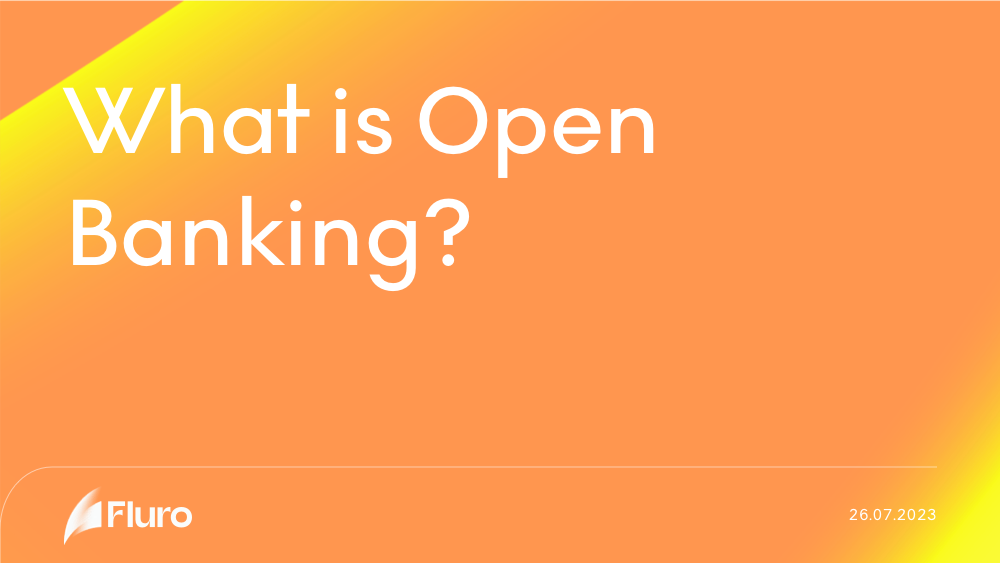What is open banking?
In simple terms, with the customer's consent, open banking allows banks to fluidly and safely share financial data with third-party services. Your login details are kept private and your funds remain secure.
That’s it. That’s the whole deal. It sounds like it might be complicated and finance-y but it’s really not.
If you want to know the how and why of open banking, well, those parts are even better and, happily, also quite simple.
How does open banking work?
Open banking is the use of open Application Programming Interfaces (okay, open APIs are a little complicated if you’re new to them but think of open API as a universal plug, only instead of being able to plug it in anywhere in the world, you can plug it into any programming language) to enable third parties to access customer data and provide services and products using that data.
So, if your bank’s digital infrastructure is built one way and a third-party infrastructure is built an entirely different way with a whole other programming language, the open API doesn’t care, it can connect to both of them at the same time!
This means instead of all consumer data being held individually by legacy banks and anyone else trying to access that data going through a whole complicated process, customer data can now be consensually shared instantly with other financial services, opening up the market to a competitive and (hopefully) therefore more customer-centric suite of products.
Open Banking consent lasts for 90 days. As such, you may be asked to renew your consent if you are using a long-term service or product from a financial provider.
Why does open banking exist?
As we alluded to above, previously, all individual customer information was held by the big legacy institutions they respectively banked with. These legacy institutions held a monopoly over the market due to a number of reasons (on the consumer side: fear of change, brand recognition, comfortability, trust, etc. and on the competitor side: a difficult-to-penetrate sector) leading to a lack of impetus to innovate or put the customer first.
Third-party financial institutions could challenge big banks by offering better rates, innovative products, and tech-forward services. Still, the difficulties surrounding information flow meant it was complicated for third-party services to be competitive (due to lack of customer information) or provide a fluid customer experience (due to having to request and wait for information from multiple sources with different processes).
Open banking means that all financial services authorised by the FCA have access to the same consenting customer information, instantly.
As you can imagine, this has disrupted the market by challenging legacy institutions to do better, advance with technology, keep rates competitive, innovate with services, etc. FinTech is now a thriving sector (think budgeting apps, investment platforms, services that show you all your finances in one place, an influx of ISA and savings products, challenger banks… the list goes on!) and consumers now have more informed autonomy than ever to manage their finances in a way that best suits their individual needs.
What’s the future of open banking?
It’s hard to say right now exactly where open banking could take us, but there are lots of things it has started to open up that vastly improve the speed, accuracy, or usefulness of the finance sector at large.
For example…
Instant payments: open banking could be used to circumvent things like Visa or Mastercard and payment gateways, making payments as instantaneous as technologically possible.
Fraud prevention: the free flow of data means fraud can be more easily and quickly identified, flagged, and prevented using patterns and anomalies.
Credit scores: credit has always been plagued with delays due to its very nature of requiring a lot of consumer information, often from different sources. Open banking could remove these delays and improve accuracy with instant, up-to-date results.
Credit products: as above, credit products are, and can increasingly become, tailored to the individual with less processing delays and instant quote results, creating improved individual rates and an overall fairer and more accessible experience.
Financial management apps: with the increasing adaption of open banking, limits to the usefulness and nature of services provided by financial management apps will continue to be lifted, adapting to instant feedback from multiple sources any time, anywhere.
Accessibility: open banking could highlight market needs, such as creating products for the underserved, as well as expand the speed and efficacy of global transactions, opening up the sector to competitive financial travel innovation and a global FinTech forum. Note: not everywhere has adopted open banking (yet).
Conclusion
Open banking allows financial services to keep pace with the advancements seen across other technologies, provide faster and more accurate, individually tailored services, and opens up a world of possibility (quite literally).

